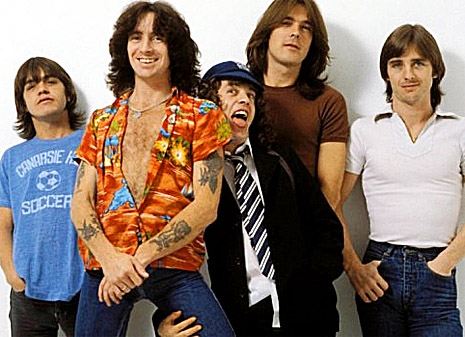
Dan Rather’s career as a network news anchor was full of memorable moments, but perhaps the single most surreal incident was the time he had to report a crime in which he was the victim. He was walking to his NYC home on October 4th, 1986, when he was accosted and beaten on the sidewalk by men who pummeled and kicked him while repeating the question “Kenneth, what is the frequency?”
It was freakin’ weird, so weird that there were some who thought Rather had lost his marbles and made it up. Most doubts were squashed when a doorman who witnessed the incident and helped thwart the attack corroborated Rather’s version of events, and remaining doubts were put to rest 11 years later, when one of the assailants was at last identified, as an apparently unwell man who thought the news media was transmitting messages to him, and who furthermore was serving time for the 1994 murder of a Today show stagehand. By then, the phrase “Kenneth, what is the frequency” (interchangeably with the misquote “What’s the frequency, Kenneth”) had long since entered pop culture, becoming the title of a cool piece of music by Game Theory in 1987, and a very popular REM song in 1994.
As it turns out, there really WAS a Kenneth, and the incident may have been a monumental case of mistaken identity. Ken Schaffer was a music publicist turned inventor who, during what would turn out to be the tail end of the Cold War, found a way to use TVRO dishes to receive Russian television broadcasts from Molniya satellites, a system he installed at the Harriman Institute for Advanced Studies of the Soviet Union at Columbia University. He even enabled the broadcast of a full week’s worth of Soviet television on the then-embryonic Discovery Channel. An amazing and weird article I found on the SETI League web site illuminates Schaffer’s connection to the Rather assault:

Because Soviet TV broadcasts were generally unavailable in the U.S., the receiver Kenny set up at the Harriman institute drew a number of visitors. Some, such as English rock musician Gordon Sumner (better known as Sting), were there to learn about the arts scene behind the Iron Curtain. (One of the first adopters of a wireless guitar amplifier developed by Schaffer two decades earlier, Sting was moved by the Molniya viewing experience to compose his popular song “Russians,” sung to a theme from the Lieutennant Kijé Suite by Russian composer Sergei Prokofiev.) Some of the visitors were American diplomats, hoping to use the knowledge gained from the screen to ease international tensions. Others, including TV news anchorman Dan Rather, came to do what journalists generally do—learn about upcoming trends so they could later report on them.
Then there were the visitors from the shadow world, all wanting to know how Schaffer was pulling these elusive signals out of the ether. Kenny generally refrained from telling them, likely hoping to capitalize on his technology by keeping the details to himself. When asked about frequencies and modulation modes, he usually changed the subject.
On the October 1986 night Rather was attacked, he and Schaffer had just left the Columbia campus, where they had been watching Molniya video downlinks. “What’s the frequency, Kenneth?” Rather was asked repeatedly while being pummeled by unknown assailants. Kenny Schaffer believes this was a simple (although painful) case of mistaken identity. The muggers followed the wrong man.
Unfuckingreal, right? We not only have Schaffer to thank (or curse, depending on your alternarock tolerance levels) for that astonishingly durable REM song, he was possibly the intended victim of the Rather beating, AND he’s complicit in that monstrous piece of crap Sting song. That last demerit, though large, is more than mitigated by the fact that Schaffer is also responsible for the monstrously awesome guitar sound on AC/DC’s early ‘80s albums. Did you note the mention in the quotation above of Schaffer’s wireless guitar amplifier? That’s a misnomer—Schaffer’s system was not an amp, but a transmitter/receiver.

The Schaffer-Vega Diversity System was an early wireless transmitter for guitarists. Its popularity blew up exponentially after its adoption by Ace Frehley of KISS, who’d been electrocuted during a performance in Florida, when his hand touching a metal guardrail completed an AC circuit with his ungrounded amp. Soon, many, many people began using Schaffer-Vegas (Frehley could easily have died, the incident was no joke), including Van Halen, the Stones, Bootsy Collins, and Frank Zappa. But the device’s moment in the sun came not from any live performance, but its use in-studio, really the last place anyone needs wireless anything.
A bit of oversimplified tech here: the Schaffer-Vega compressed a guitar’s signal before transmission, and expanded it at the receiver end, before feeding the transmitted signal to the amp. While it expanded the signal, it boosted certain frequencies that could tend to be lost to compression. So not only did the device wirelessly transmit a signal, it colored the guitar’s tone in distinctive ways, creating harmonic distortions, but they happened to be pleasing distortions.


Angus Young with Ken Schaffer. Photo: SoloDallas
And so it was that Angus Young of AC/DC began using wireless in the recording studio. Unable to satisfactorily record his ridiculous ball-crunching live sound, he soon resorted to the obvious move, and used his live rig:
George [Young, Angus and Malcolm’s older brother and first AC/DC producer] had suggested that I use the SVDS in the studio in 1978, then when Mutt Lange came in [producer of Highway to Hell, Back in Black, For Those About to Rock We Salute You], he asked me to use the same stuff that I was using for my stage sound, so we used the SVDS again.
The Schaffer-Vega’s unique compression/expansion/EQ scheme turns out to be THE key to AC/DC’s distinctively rich guitar sound, every bit as much as a late ‘60s Gibson SG and a late ‘70s Marshall amp. However, the units had to be abandoned in 1982, victim both to changing FCC regulations on wireless specs, and Ken Schaffer’s changing interests… changing interests which led to a Cold War satellite breakthrough, which led to a really famous reporter getting his ass beat down on Park Avenue. Nutty world, isn’t it?
There’s a happy ending for the Schaffer-Vega, though—this is the news item that got me down into this rabbit-hole to begin with, in fact: the device has been resurrected, redesigned by a company called SoloDallas from Schaffer’s original units and named the “Schaffer Replica.” An early run of the replicas is sold out, but not only is an updated version available, it’ll be featured at this week’s musical instrument industry exposition, Summer NAMM. It’s available both as a tower and as a regular guitar pedal. To be blunt, both of the devices are spendy as hell, though either option is cheaper by far than a late ‘60s Gibson SG or a late ‘70s Marshall amp. Angus Young used the newly recreated gizmo on AC/DC’s likely farewell album, the well-received Rock or Bust, making it the first AC/DC album to feature one since 1983. (And I don’t want to goddamn hear about it if you don’t like AC/DC—you’re just wrong. I love them abidingly for the same reasons I love the Ramones and Lungfish: if you keep making more or less the same album over and over again for decades and I love that album almost every time, you’re on to something worthy.)
Here’s some killer footage of AC/DC live on The Midnight Special in 1978. Angus Young is SURELY using a Schaffer-Vega wireless setup here:
And here’s Dan Rather “helping” REM on “What’s the Frequency, Kenneth,” as shown on Letterman. The AC/DC stuff rocks a good bit harder.
BIG ups to Ben Merlis for sending me down this ridiculous rabbit hole. Hopefully, one of these days he’ll tell me how to get Malcom Young’s guitar tone.